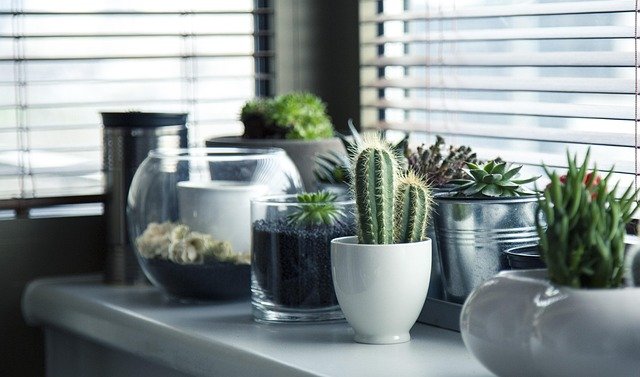Bespoke Bioluminescent Botanical Gardens: Illuminating Indoor Spaces
Imagine stepping into your living room at dusk, only to be greeted by a soft, ethereal glow emanating from your houseplants. This isn't a scene from a science fiction novel, but rather the cutting-edge world of bespoke bioluminescent botanical gardens. As the sun sets, these living, breathing light sources come to life, transforming ordinary indoor spaces into magical, self-illuminating ecosystems that blend nature, science, and design in unprecedented ways.

The concept of bioluminescent plants first gained widespread attention in 2013 when a team of bioengineers successfully created glowing plants using genes from bioluminescent marine bacteria. This breakthrough laid the groundwork for what would become a revolutionary approach to indoor lighting and plant design.
From Laboratory to Living Room
While early experiments in plant bioluminescence were limited to small, short-lived specimens, recent advancements have led to the development of larger, more robust bioluminescent plants suitable for home environments. These plants are not just novelties; they represent a fusion of form and function, offering both aesthetic appeal and practical lighting solutions.
Bespoke bioluminescent botanical gardens are now being designed and cultivated specifically for residential and commercial spaces. These custom-created ecosystems feature a variety of glowing plants, each carefully selected and arranged to create a harmonious, living light installation.
The Art of Luminous Landscaping
Creating a bioluminescent botanical garden is both a science and an art. Designers must consider not only the light output of each plant but also its growth habits, care requirements, and how it interacts with other species in the ecosystem.
Popular choices for bioluminescent indoor gardens include modified versions of common houseplants like pothos, philodendrons, and ferns. These plants are prized for their adaptability to indoor conditions and their ability to produce a steady, gentle glow. More exotic options might include bioluminescent orchids or specially engineered succulents that emit a soft blue or green light.
The key to a successful bioluminescent garden lies in the thoughtful arrangement of plants to create layers of light and shadow. Designers often incorporate non-glowing plants as well, using their shapes and textures to complement and enhance the luminous elements.
Cultivating Your Own Glowing Garden
For homeowners interested in creating their own bioluminescent oasis, several companies now offer kits and consultations to help bring these living light sources into residential spaces. The process typically begins with an assessment of the intended space, considering factors like ambient light levels, temperature, and humidity.
Once the environmental conditions are understood, a custom plan is developed, outlining the types of plants to be used, their arrangement, and care instructions. Installation can be as simple as placing a few glowing plants in strategic locations or as complex as creating a full-scale indoor ecosystem complete with specialized growing equipment and automated care systems.
The Benefits Beyond Beauty
While the aesthetic appeal of bioluminescent plants is undeniable, their benefits extend far beyond mere decoration. These living light sources offer a sustainable alternative to traditional electric lighting, potentially reducing energy consumption and lowering carbon footprints.
Moreover, the presence of plants indoors has been shown to have numerous health benefits, including improved air quality, reduced stress levels, and enhanced cognitive function. Bioluminescent plants take these benefits a step further by providing a gentle, natural light source that can improve mood and sleep patterns.
Challenges and Considerations
As with any emerging technology, bioluminescent plants come with their own set of challenges. Maintaining the health and luminosity of these specialized plants requires careful attention to environmental conditions and regular care. Some critics have raised concerns about the potential ecological impact of genetically modified glowing plants, should they ever escape into the wild.
To address these concerns, many companies working in this field are developing sterile varieties that cannot reproduce outside of controlled conditions. Additionally, ongoing research is focused on improving the longevity and stability of bioluminescent traits in plants.
The Future of Living Light
As technology continues to advance, the possibilities for bioluminescent botanical design seem limitless. Researchers are already exploring ways to create plants with different colors of bioluminescence, as well as those that can change color in response to environmental stimuli or even on command.
The integration of bioluminescent plants with smart home technology is another exciting frontier. Imagine a garden that automatically adjusts its light output based on the time of day or your personal preferences, all controlled through your smartphone or voice assistant.
A New Era of Natural Illumination
Bespoke bioluminescent botanical gardens represent a paradigm shift in how we think about indoor lighting and plant design. By harnessing the natural power of bioluminescence, we’re not just creating beautiful spaces; we’re reimagining the relationship between nature, technology, and our living environments.
As this field continues to grow and evolve, it promises to bring a new level of enchantment and functionality to our homes and public spaces. The soft, living glow of bioluminescent plants may soon become as common in our indoor landscapes as traditional light fixtures, ushering in an era where nature itself lights our way.





